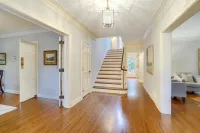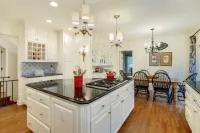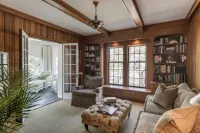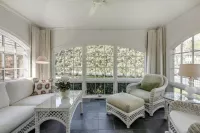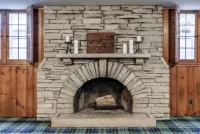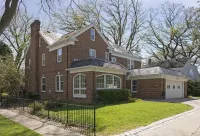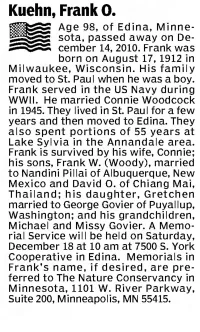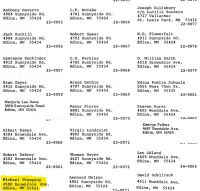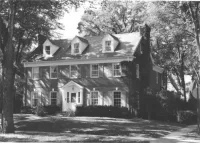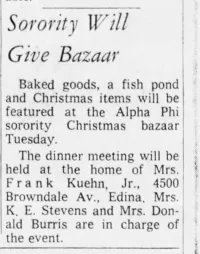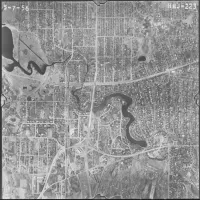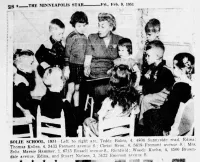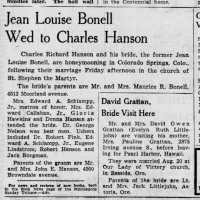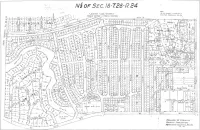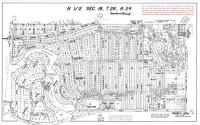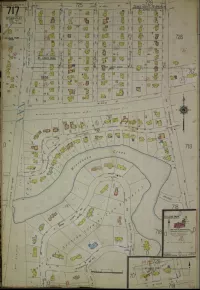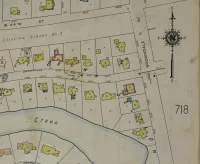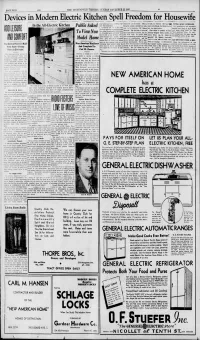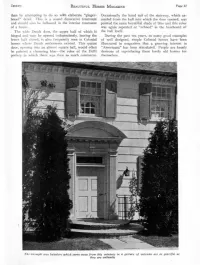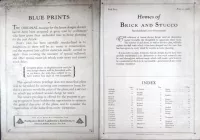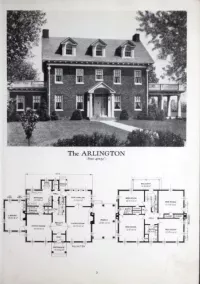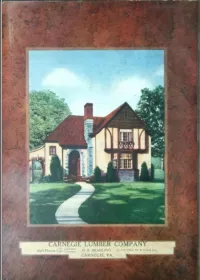Share what you know,
and discover more.
Share what you know,
and discover more.
Apr 01, 2024
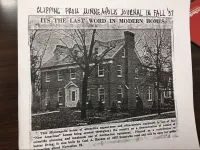
-

- Marley Zielike
Its The Last Word In Modern Homes
Excerpt story from a user: "We know that we are the fifth family to own the home and it was built by Carl Hansen. We know that his wife, Ruth, lived there for a number of years and even had a doorbell in the living room floor to summon the maid if guests stayed too long. We know that the other families that lived in the house include the Jarrett (who we bought from), the Thompsons who lived there for a number of years and bought from the Gisselbeck's." The image is from 1937.
Its The Last Word In Modern Homes
Excerpt story from a user: "We know that we are the fifth family to own the home and it was built by Carl Hansen. We know that his wife, Ruth, lived there for a number of years and even had a doorbell in the living room floor to summon the maid if guests stayed too long. We know that the other families that lived in the house include the Jarrett (who we bought from), the Thompsons who lived there for a number of years and bought from the Gisselbeck's." The image is from 1937.
Apr 01, 2024
Its The Last Word In Modern Homes
Excerpt story from a user: "We know that we are the fifth family to own the home and it was built by Carl Hansen. We know that his wife, Ruth, lived there for a number of years and even had a doorbell in the living room floor to summon the maid if guests stayed too long. We know that the other families that lived in the house include the Jarrett (who we bought from), the Thompsons who lived there for a number of years and bought from the Gisselbeck's."The image is from 1937.
Posted Date
Apr 29, 2024
Historical Record Date
Apr 01, 2024
Source Name
HouseNovel User
Delete Story
Are you sure you want to delete this story?
Apr 01, 2024
Apr 01, 2024
Building Permits
List of building permits for the home dating back to 1996.Posted Date
Apr 25, 2024
Historical Record Date
Apr 01, 2024
Source Name
City of Edina
Source Website
Delete Story
Are you sure you want to delete this story?
Jun 01, 2019
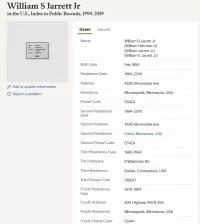
Previous Resident: William S. Jarret Jr.
U.S. index of public records shows William S. Jarrett Jr. resided at 4500 Browndale Ave from 1994 to 2019.
Jun 01, 2019
Delete Story
Are you sure you want to delete this story?
Mar 29, 2019
Mar 29, 2019
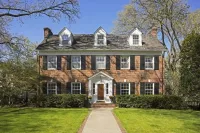
-

- Dave D
Sold for $1,300,000
From listing: Landmark home on Premier Street in Edina's historic Country Club district. Brick Georgian colonial on a corner lot with great street presence. Grand rooms with superior craftsmanship and architectural detail. The kitchen has a southern exposure that is rare in the neighborhood. Four bedrooms on the second floor are all generous in size. All baths on the second floor are gorgeous.
Sold for $1,300,000
From listing: Landmark home on Premier Street in Edina's historic Country Club district. Brick Georgian colonial on a corner lot with great street presence. Grand rooms with superior craftsmanship and architectural detail. The kitchen has a southern exposure that is rare in the neighborhood. Four bedrooms on the second floor are all generous in size. All baths on the second floor are gorgeous.
Sold for $1,300,000
From listing:Landmark home on Premier Street in Edina's historic Country Club district. Brick Georgian colonial on a corner lot with great street presence. Grand rooms with superior craftsmanship and architectural detail. The kitchen has a southern exposure that is rare in the neighborhood. Four bedrooms on the second floor are all generous in size. All baths on the second floor are gorgeous.
Posted Date
Feb 13, 2022
Historical Record Date
Mar 29, 2019
Source Name
Realtor.com
Delete Story
Are you sure you want to delete this story?
Dec 17, 2010
Dec 17, 2010
Past Homeowner - Frank O Kuehn
Obituary for Frank O. Kuehn in 2010.Posted Date
Apr 30, 2024
Historical Record Date
Dec 17, 2010
Source Name
Star Tribune
Source Website
Delete Story
Are you sure you want to delete this story?
Feb 25, 1999
Feb 25, 1999
Delete Story
Are you sure you want to delete this story?
Jan 14, 1994

Ownership history: William and Nancy Jarrett
Hennepin County records show that William and Nancy Jarrett owned the home at 4500 Browndale from January 1994 to August 2021.
Jan 14, 1994
Delete Story
Are you sure you want to delete this story?
Apr 26, 1982
Apr 26, 1982
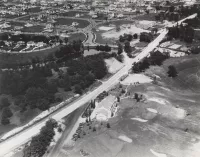
-

- Marley Zielike
National Register of Historic Places - Country Club Historic District
Statement of Significance: The Country Club District, a well-planned suburban residential development dating from 1922, is significant as one of Minnesota's first restricted, comprehensive residential planning efforts, which became the prototype for Edina's subsequent residential developments; as a large homogeneous neighborhood of "historic revival architecture; and as the home of a large number of the Twin Cities' leaders in business, industry, communications, and civic affairs. Planning for the Country Club District into a comprehensively developed residential community was begun by Samuel S. Thorpe and Thorpe Brothers Realty Company in 1922. In that year, the Brown and Browndale farms, as well as part of the Baird homestead, were purchased for the development. Between 1922 and 1924, Thorpe spent over one million dollars in platting the 300 acres into 585 homesites; planting and landscaping; installing and paving sidewalks and streets; installing water, gas, underground electrical wiring and sewers; and developing an eighteen-hole golf course and clubhouse. Many of the principles of "modern town planning," applied to post-World War I developments such as the Olmstead Brothers' Palso Verdes Project near Los Angeles, Mariemont near Cincinnati, Roland Park near Baltimore, and the Country Club Districts near Charlottesville, Birmingham and Kansas City, were incorporated into the design of Thorpe's development. In many respects, Thorpe's development was modeled after J.C. Nichols' Country Club District in Kansas City -a landscaped development with curved streets, large contoured homesites, parks, and an eighteen-hole golf course. Thorpe borrowed the central theme represented in Nichols' development --a planned residential area, with streets paved and utilities installed before lots were sold; with detailed deed restrictions; control over the value and architecture of houses; and a neighborhood association under the developer's sponsorship to build community activities and work closely with the local government. As a result of the strict adherence to these restrictions, Thorpe's idealized community of "the exclusive and select"—a community where you can be proud to live, proud of your home . . . and of your neighbor's home as well"—became a reality. The well-planned residential development envisioned by Thorpe, designed to be in close proximity to shopping, schools (in 1925 Thorpe donated part of Lot 16, Brown Section for construction of the Wooddale School), churches and a country club (an 18-hole golf course and club house were developed by Thorpe south of the district), is a district of well-designed and constructed homes, all but a few in an excellent state of preservation; well landscaped and maintained yards; no above ground electrical wiring; no obtrusive signage; contoured streets; and parks and intersection islands. The majority of buildings in the district are two stories in height, set back twenty feet from sidewalks, built in proportion to adjacent buildings (the houses east of Wooddale Avenue are smaller in scale than those built to the west), and exhibit a minimum of alterations (additions and alterations have generally been limited to the rear facades of buildings). The 554 buildings in the district, the majority constructed between 1924 and 1931, represent a significant concentration of historic revival architectural styles. In 1925, Thorpe Brothers Realty Company commissioned the Minneapolis architectural firm of Liebenberg and Kaplan to design model homes on Edina Boulevard and Moorland Avenue. The houses were designed in a variety of historic revival styles, including English Tudor, French Provincial, and American Colonial. To a considerable degree, these houses set an architectural standard for later construction in the district.2 Historic revival styles, including American Colonial (158), American Georgian (6), Cape Cod Colonial (6), Dutch Colonial (4), English Cottage (180), English Georgian (3), English Tudor (20), French Provincial (11), Italian Renaissance (17), Mediterranean (67), New England Colonial (38), Norman (25), and Southern Colonial (1) inspired the design of 97% of the buildings in the district. The most popular designs are English Cottage (32%), American Colonial (29%), and Mediterranean (12%). The majority of buildings were designed and constructed by contractors. Following are descriptions of the most popular styles represented in the district. The American Colonial Revival style, popular throughout the district from 1924 through the 1950s, is typified by a height of two stories; a second-story overhang, usually with drops or pendants; strictly symmetrical facades; gabled roofs; a chimney at one or both ends; narrow clapboard siding; double hung windows, usually with shutters; and doors with classical trim. The English Cottage style, popular throughout the district from 1924 to 1931, is characterized by a height of two stories; use of stone, brick or stucco as the principal construction material; steep triangular gables projecting above a gable or hip roof, and usually not continuous with the plane of the wall; extensive use of decorative brick or stone around semicircular door and garden gate openings, on the foundation and front steps; impressive chimneys, usually decorated with brick or stone, frequently the chimney is placed on the front facade; and use of "mock" half timbering. The Mediterranean (Spanish Colonial Revival) style was popular in the design of houses throughout the district from 1924 to 1930. The Wooddale School on West 50th Street exhibits Mediterranean style features. Mediterranean style residences in the district are characteristically two stories in height; have white or cream-colored smooth stucco walls; low hip roofs, usually with red or green barrel tile; contain wrought iron grilles as decoration, such as window boxes, mock balconets and railings; and contain semicircular openings, mock arcades and recessed panels. Twenty houses on Casco, Drexel, Wooddale and Moorland Avenues and on Edina Boulevard were designed in the English Tudor style from 1925 to 1936. The style, closely related to the English Cottage style, is characterized by a height of two stories; extensive use of half timbering with stucco or brick; multiple triangular gables projecting above the roof; impressive chimneys, usually decorated with brick and stone, and containing projecting chimney pots; doorways with the "Tudor arch", a distinctive, very wide, almost flat, but pointed arch; oriel windows, often with tracery or diamond shaped panes; sharply pitched roofs; and projecting bays. The New England Colonial Revival style? used in the design of thirty-eight buildings throughout the district from 1924 to 1950, is characterized by a height of two to two-and-one half stories; gable roofs, usually with dormers; strictly symmetrical facades; double hung windows with shutters; side sing or wings; cornice with dentils; chimney at each gable end; centrally located door with classical trim; and use of brick as the principal construction material. Seventeen houses in the district were constructed from 1924 to 1927 in the Italian Renaissance Revival style on Arden, Bruce, Casco, Drexel, Wooddale, and Browndale Avenues. Italian Renaissance Revival style features used in the design of these houses include a height of two stories; rectangular or square plans; vertically symmetrical door and window openings; smooth stucco walls; low hip roofs, often composed of barrel tile; use of semicircular arches, lintels and recessed panels; projecting cornices; placement of second story windows close to the cornice; and centered doorways with classical trim. The French Provincial style was used in the design of eleven houses from 1926 to 1941 on Bruce, Drexel, Moorland and Wooddale Avenues, Edina Boulevard and Sunnyside Road. These houses contain the following French Provincial design characteristics: a height of two stories; deep hip roofs; segmentally arched windows, dormers and doors; vertically symmetrical placement of windows, dormers and doors, often decorated with shutters; brick or stucco as the principal construction materials; and corner quoins. The Norman Revival style was used in the design of twenty-five houses on Browndale, Moorland, Casco, Drexel and Wooddale Avenues, Edina Boulevard, Edgebrook Place and Sunnyside Road. Characteristics of this style include a height of two stories; combination of hip and gable roofs; multiple triangular gables projecting above the roof; impressive chimneys with decorative brick or stone and capped with chimney pots; extensive use of half timbering; main entrance located in a round tower capped with a conical roof; extensive use of decorative patterned brick or decorative stone. The district contains 199 buildings (36%) that are categorized as pivotal buildings of historical and/or architectural importance that define the significance of the district. 351 buildings (63%) are considered complementary to the district. Four buildings, all built in contemporary styles in the 1970s, are categorized as intrusive to the significance of the district. Following is a breakdown of categories within the district with corresponding dates of construction and architectural style designations. Photo Credit: Edina Magazine via Edina Historical Society. Edina around 1930. Wooddale School, built in 1926, is near the upper right corner. The other difference is that it shows West 50th Street—the fork in the road next to the golf course is the junction of Eden Avenue and 50th Street. Edina Mills can be seen just to the right of the water. It’s partially obstructed by a tree.
National Register of Historic Places - Country Club Historic District
Statement of Significance: The Country Club District, a well-planned suburban residential development dating from 1922, is significant as one of Minnesota's first restricted, comprehensive residential planning efforts, which became the prototype for Edina's subsequent residential developments; as a large homogeneous neighborhood of "historic revival architecture; and as the home of a large number of the Twin Cities' leaders in business, industry, communications, and civic affairs. Planning for the Country Club District into a comprehensively developed residential community was begun by Samuel S. Thorpe and Thorpe Brothers Realty Company in 1922. In that year, the Brown and Browndale farms, as well as part of the Baird homestead, were purchased for the development. Between 1922 and 1924, Thorpe spent over one million dollars in platting the 300 acres into 585 homesites; planting and landscaping; installing and paving sidewalks and streets; installing water, gas, underground electrical wiring and sewers; and developing an eighteen-hole golf course and clubhouse. Many of the principles of "modern town planning," applied to post-World War I developments such as the Olmstead Brothers' Palso Verdes Project near Los Angeles, Mariemont near Cincinnati, Roland Park near Baltimore, and the Country Club Districts near Charlottesville, Birmingham and Kansas City, were incorporated into the design of Thorpe's development. In many respects, Thorpe's development was modeled after J.C. Nichols' Country Club District in Kansas City -a landscaped development with curved streets, large contoured homesites, parks, and an eighteen-hole golf course. Thorpe borrowed the central theme represented in Nichols' development --a planned residential area, with streets paved and utilities installed before lots were sold; with detailed deed restrictions; control over the value and architecture of houses; and a neighborhood association under the developer's sponsorship to build community activities and work closely with the local government. As a result of the strict adherence to these restrictions, Thorpe's idealized community of "the exclusive and select"—a community where you can be proud to live, proud of your home . . . and of your neighbor's home as well"—became a reality. The well-planned residential development envisioned by Thorpe, designed to be in close proximity to shopping, schools (in 1925 Thorpe donated part of Lot 16, Brown Section for construction of the Wooddale School), churches and a country club (an 18-hole golf course and club house were developed by Thorpe south of the district), is a district of well-designed and constructed homes, all but a few in an excellent state of preservation; well landscaped and maintained yards; no above ground electrical wiring; no obtrusive signage; contoured streets; and parks and intersection islands. The majority of buildings in the district are two stories in height, set back twenty feet from sidewalks, built in proportion to adjacent buildings (the houses east of Wooddale Avenue are smaller in scale than those built to the west), and exhibit a minimum of alterations (additions and alterations have generally been limited to the rear facades of buildings). The 554 buildings in the district, the majority constructed between 1924 and 1931, represent a significant concentration of historic revival architectural styles. In 1925, Thorpe Brothers Realty Company commissioned the Minneapolis architectural firm of Liebenberg and Kaplan to design model homes on Edina Boulevard and Moorland Avenue. The houses were designed in a variety of historic revival styles, including English Tudor, French Provincial, and American Colonial. To a considerable degree, these houses set an architectural standard for later construction in the district.2 Historic revival styles, including American Colonial (158), American Georgian (6), Cape Cod Colonial (6), Dutch Colonial (4), English Cottage (180), English Georgian (3), English Tudor (20), French Provincial (11), Italian Renaissance (17), Mediterranean (67), New England Colonial (38), Norman (25), and Southern Colonial (1) inspired the design of 97% of the buildings in the district. The most popular designs are English Cottage (32%), American Colonial (29%), and Mediterranean (12%). The majority of buildings were designed and constructed by contractors. Following are descriptions of the most popular styles represented in the district. The American Colonial Revival style, popular throughout the district from 1924 through the 1950s, is typified by a height of two stories; a second-story overhang, usually with drops or pendants; strictly symmetrical facades; gabled roofs; a chimney at one or both ends; narrow clapboard siding; double hung windows, usually with shutters; and doors with classical trim. The English Cottage style, popular throughout the district from 1924 to 1931, is characterized by a height of two stories; use of stone, brick or stucco as the principal construction material; steep triangular gables projecting above a gable or hip roof, and usually not continuous with the plane of the wall; extensive use of decorative brick or stone around semicircular door and garden gate openings, on the foundation and front steps; impressive chimneys, usually decorated with brick or stone, frequently the chimney is placed on the front facade; and use of "mock" half timbering. The Mediterranean (Spanish Colonial Revival) style was popular in the design of houses throughout the district from 1924 to 1930. The Wooddale School on West 50th Street exhibits Mediterranean style features. Mediterranean style residences in the district are characteristically two stories in height; have white or cream-colored smooth stucco walls; low hip roofs, usually with red or green barrel tile; contain wrought iron grilles as decoration, such as window boxes, mock balconets and railings; and contain semicircular openings, mock arcades and recessed panels. Twenty houses on Casco, Drexel, Wooddale and Moorland Avenues and on Edina Boulevard were designed in the English Tudor style from 1925 to 1936. The style, closely related to the English Cottage style, is characterized by a height of two stories; extensive use of half timbering with stucco or brick; multiple triangular gables projecting above the roof; impressive chimneys, usually decorated with brick and stone, and containing projecting chimney pots; doorways with the "Tudor arch", a distinctive, very wide, almost flat, but pointed arch; oriel windows, often with tracery or diamond shaped panes; sharply pitched roofs; and projecting bays. The New England Colonial Revival style? used in the design of thirty-eight buildings throughout the district from 1924 to 1950, is characterized by a height of two to two-and-one half stories; gable roofs, usually with dormers; strictly symmetrical facades; double hung windows with shutters; side sing or wings; cornice with dentils; chimney at each gable end; centrally located door with classical trim; and use of brick as the principal construction material. Seventeen houses in the district were constructed from 1924 to 1927 in the Italian Renaissance Revival style on Arden, Bruce, Casco, Drexel, Wooddale, and Browndale Avenues. Italian Renaissance Revival style features used in the design of these houses include a height of two stories; rectangular or square plans; vertically symmetrical door and window openings; smooth stucco walls; low hip roofs, often composed of barrel tile; use of semicircular arches, lintels and recessed panels; projecting cornices; placement of second story windows close to the cornice; and centered doorways with classical trim. The French Provincial style was used in the design of eleven houses from 1926 to 1941 on Bruce, Drexel, Moorland and Wooddale Avenues, Edina Boulevard and Sunnyside Road. These houses contain the following French Provincial design characteristics: a height of two stories; deep hip roofs; segmentally arched windows, dormers and doors; vertically symmetrical placement of windows, dormers and doors, often decorated with shutters; brick or stucco as the principal construction materials; and corner quoins. The Norman Revival style was used in the design of twenty-five houses on Browndale, Moorland, Casco, Drexel and Wooddale Avenues, Edina Boulevard, Edgebrook Place and Sunnyside Road. Characteristics of this style include a height of two stories; combination of hip and gable roofs; multiple triangular gables projecting above the roof; impressive chimneys with decorative brick or stone and capped with chimney pots; extensive use of half timbering; main entrance located in a round tower capped with a conical roof; extensive use of decorative patterned brick or decorative stone. The district contains 199 buildings (36%) that are categorized as pivotal buildings of historical and/or architectural importance that define the significance of the district. 351 buildings (63%) are considered complementary to the district. Four buildings, all built in contemporary styles in the 1970s, are categorized as intrusive to the significance of the district. Following is a breakdown of categories within the district with corresponding dates of construction and architectural style designations. Photo Credit: Edina Magazine via Edina Historical Society. Edina around 1930. Wooddale School, built in 1926, is near the upper right corner. The other difference is that it shows West 50th Street—the fork in the road next to the golf course is the junction of Eden Avenue and 50th Street. Edina Mills can be seen just to the right of the water. It’s partially obstructed by a tree.
National Register of Historic Places - Country Club Historic District
Statement of Significance:The Country Club District, a well-planned suburban residential development dating from 1922, is significant as one of Minnesota's first restricted, comprehensive residential planning efforts, which became the prototype for Edina's subsequent residential developments; as a large homogeneous neighborhood of "historic revival architecture; and as the home of a large number of the Twin Cities' leaders in business, industry, communications, and civic affairs.
Planning for the Country Club District into a comprehensively developed residential community was begun by Samuel S. Thorpe and Thorpe Brothers Realty Company in 1922. In that year, the Brown and Browndale farms, as well as part of the Baird homestead, were purchased for the development. Between 1922 and 1924, Thorpe spent over one million dollars in platting the 300 acres into 585 homesites; planting and landscaping; installing and paving sidewalks and streets; installing water, gas, underground electrical wiring and sewers; and developing an eighteen-hole golf course and clubhouse.
Many of the principles of "modern town planning," applied to post-World War I developments such as the Olmstead Brothers' Palso Verdes Project near Los Angeles, Mariemont near Cincinnati, Roland Park near Baltimore, and the Country Club Districts near Charlottesville, Birmingham and Kansas City, were incorporated into the design of Thorpe's development. In many respects, Thorpe's development was modeled after J.C. Nichols' Country Club District in Kansas City -a landscaped development with curved streets, large contoured homesites, parks, and an eighteen-hole golf course. Thorpe borrowed the central theme represented in Nichols' development --a planned residential area, with streets paved and utilities installed before lots were sold; with detailed deed restrictions; control over the value and architecture of houses; and a neighborhood association under the developer's sponsorship to build community activities and work closely with the local government.
As a result of the strict adherence to these restrictions, Thorpe's idealized community of "the exclusive and select"—a community where you can be proud to live, proud of your home . . . and of your neighbor's home as well"—became a reality. The well-planned residential development envisioned by Thorpe, designed to be in close proximity to shopping, schools (in 1925 Thorpe donated part of Lot 16, Brown Section for construction of the Wooddale School), churches and a country club (an 18-hole golf course and club house were developed by Thorpe south of the district), is a district of well-designed and constructed homes, all but a few in an excellent state of preservation; well landscaped and maintained yards; no above ground electrical wiring; no obtrusive signage; contoured streets; and parks and intersection islands.
The majority of buildings in the district are two stories in height, set back twenty feet from sidewalks, built in proportion to adjacent buildings (the houses east of Wooddale Avenue are smaller in scale than those built to the west), and exhibit a minimum of alterations (additions and alterations have generally been limited to the rear facades of buildings).
The 554 buildings in the district, the majority constructed between 1924 and 1931, represent a significant concentration of historic revival architectural styles. In 1925, Thorpe Brothers Realty Company commissioned the Minneapolis architectural firm of Liebenberg and Kaplan to design model homes on Edina Boulevard and Moorland Avenue. The houses were designed in a variety of historic revival styles, including English Tudor, French Provincial, and American Colonial. To a considerable degree, these houses set an architectural standard for later construction in the district.2 Historic revival styles, including American Colonial (158), American Georgian (6), Cape Cod Colonial (6), Dutch Colonial (4), English Cottage (180), English Georgian (3), English Tudor (20), French Provincial (11), Italian Renaissance (17), Mediterranean (67), New England Colonial (38), Norman (25), and Southern Colonial (1) inspired the design of 97% of the buildings in the district. The most popular designs are English Cottage (32%), American Colonial (29%), and Mediterranean (12%). The majority of buildings were designed and constructed by contractors. Following are descriptions of the most popular styles represented in the district.
The American Colonial Revival style, popular throughout the district from 1924 through the 1950s, is typified by a height of two stories; a second-story overhang, usually with drops or pendants; strictly symmetrical facades; gabled roofs; a chimney at one or both ends; narrow clapboard siding; double hung windows, usually with shutters; and doors with classical trim.
The English Cottage style, popular throughout the district from 1924 to 1931, is characterized by a height of two stories; use of stone, brick or stucco as the principal construction material; steep triangular gables projecting above a gable or hip roof, and usually not continuous with the plane of the wall; extensive use of decorative brick or stone around semicircular door and garden gate openings, on the foundation and front steps; impressive chimneys, usually decorated with brick or stone, frequently the chimney is placed on the front facade; and use of "mock" half timbering.
The Mediterranean (Spanish Colonial Revival) style was popular in the design of houses throughout the district from 1924 to 1930. The Wooddale School on West 50th Street exhibits Mediterranean style features. Mediterranean style residences in the district are characteristically two stories in height; have white or cream-colored smooth stucco walls; low hip roofs, usually with red or green barrel tile; contain wrought iron grilles as decoration, such as window boxes, mock balconets and railings; and contain semicircular openings, mock arcades and recessed panels.
Twenty houses on Casco, Drexel, Wooddale and Moorland Avenues and on Edina Boulevard were designed in the English Tudor style from 1925 to 1936. The style, closely related to the English Cottage style, is characterized by a height of two stories; extensive use of half timbering with stucco or brick; multiple triangular gables projecting above the roof; impressive chimneys, usually decorated with brick and stone, and containing projecting chimney pots; doorways with the "Tudor arch", a distinctive, very wide, almost flat, but pointed arch; oriel windows, often with tracery or diamond shaped panes; sharply pitched roofs; and projecting bays.
The New England Colonial Revival style? used in the design of thirty-eight buildings throughout the district from 1924 to 1950, is characterized by a height of two to two-and-one half stories; gable roofs, usually with dormers; strictly symmetrical facades; double hung windows with shutters; side sing or wings; cornice with dentils; chimney at each gable end; centrally located door with classical trim; and use of brick as the principal construction material.
Seventeen houses in the district were constructed from 1924 to 1927 in the Italian Renaissance Revival style on Arden, Bruce, Casco, Drexel, Wooddale, and Browndale Avenues. Italian Renaissance Revival style features used in the design of these houses include a height of two stories; rectangular or square plans; vertically symmetrical door and window openings; smooth stucco walls; low hip roofs, often composed of barrel tile; use of semicircular arches, lintels and recessed panels; projecting cornices; placement of second story windows close to the cornice; and centered doorways with classical trim.
The French Provincial style was used in the design of eleven houses from 1926 to 1941 on Bruce, Drexel, Moorland and Wooddale Avenues, Edina Boulevard and Sunnyside Road. These houses contain the following French Provincial design characteristics: a height of two stories; deep hip roofs; segmentally arched windows, dormers and doors; vertically symmetrical placement of windows, dormers and doors, often decorated with shutters; brick or stucco as the principal construction materials; and corner quoins.
The Norman Revival style was used in the design of twenty-five houses on Browndale, Moorland, Casco, Drexel and Wooddale Avenues, Edina Boulevard, Edgebrook Place and Sunnyside Road. Characteristics of this style include a height of two stories; combination of hip and gable roofs; multiple triangular gables projecting above the roof; impressive chimneys with decorative brick or stone and capped with chimney pots; extensive use of half timbering; main entrance located in a round tower capped with a conical roof; extensive use of decorative patterned brick or decorative stone.
The district contains 199 buildings (36%) that are categorized as pivotal buildings of historical and/or architectural importance that define the significance of the district. 351 buildings (63%) are considered complementary to the district. Four buildings, all built in contemporary styles in the 1970s, are categorized as intrusive to the significance of the district. Following is a breakdown of categories within the district with corresponding dates of construction and architectural style designations.
Photo Credit: Edina Magazine via Edina Historical Society. Edina around 1930. Wooddale School, built in 1926, is near the upper right corner. The other difference is that it shows West 50th Street—the fork in the road next to the golf course is the junction of Eden Avenue and 50th Street. Edina Mills can be seen just to the right of the water. It’s partially obstructed by a tree.
Posted Date
Apr 18, 2024
Historical Record Date
Apr 26, 1982
Source Name
National Register of Historic Places
Source Website
Delete Story
Are you sure you want to delete this story?
Sep 01, 1980
Sep 01, 1980
4500 Browndale Avenue, Minneapolis, MN, USA
National Register of Historic Place - Country Club evaluation in September 1980.Posted Date
Feb 13, 2022
Historical Record Date
Sep 01, 1980
Source Name
National Register of Historic Places
Delete Story
Are you sure you want to delete this story?
Dec 21, 1979
Dec 21, 1979

Past Homeowners - Michael W. Thompson and Diana Lee Thompson
Hennepin County Records show that the Thompson family's first mortgage deed of trust was Dec 21, 1979.
Delete Story
Are you sure you want to delete this story?
Dec 05, 1972
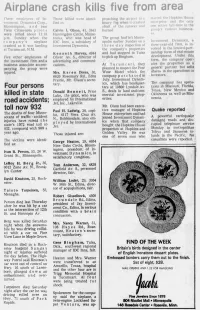
Airplane Crash Kills Five From Area
The story details the plane crash that killed five people and injured six, including Robert Gisselbeck of 4500 Browndale.
Dec 05, 1972
Airplane Crash Kills Five From Area
The story details the plane crash that killed five people and injured six, including Robert Gisselbeck of 4500 Browndale.Posted Date
Apr 24, 2024
Historical Record Date
Dec 05, 1972
Source Name
Star Tribune
Source Website
Delete Story
Are you sure you want to delete this story?
May 11, 1965
May 11, 1965
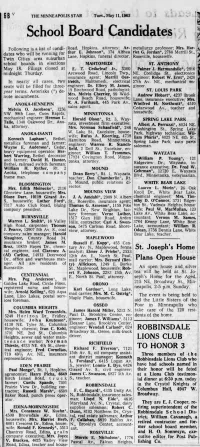
School Board Candidates
Mrs. Constance W. Kuehn of 4500 Browndale was listed as a schoolboard candidate representing Edina-Morningside in 1965.
School Board Candidates
Mrs. Constance W. Kuehn of 4500 Browndale was listed as a schoolboard candidate representing Edina-Morningside in 1965.Posted Date
Apr 30, 2024
Historical Record Date
May 11, 1965
Source Name
The Minneapolis Star
Source Website
Delete Story
Are you sure you want to delete this story?
Dec 05, 1960
Dec 05, 1960
Sorority Will Give Bazaar
The article mentions a dinner meeting at the home of Mrs. Frank Kuehn, Jr. 4500 Browndale Ave.Posted Date
Apr 30, 2024
Historical Record Date
Dec 05, 1960
Source Name
The Minneapolis Star
Source Website
Delete Story
Are you sure you want to delete this story?
May 07, 1956
May 07, 1956
Historic Aerial Map
Historic aerial photographs of the Edina Country Club and 4500 Browndale Avenue in 1956.Posted Date
Apr 25, 2024
Historical Record Date
May 07, 1956
Source Name
University of Minnesota Libraries
Source Website
Delete Story
Are you sure you want to delete this story?
Aug 21, 1951
Aug 21, 1951
Household & Domestic Wanted
Advertisement seeking a girl or young woman with housework and care of three children.Posted Date
Apr 30, 2024
Historical Record Date
Aug 21, 1951
Source Name
Star Tribune
Source Website
Delete Story
Are you sure you want to delete this story?
Feb 09, 1951
Feb 09, 1951
Delete Story
Are you sure you want to delete this story?
Jun 24, 1950
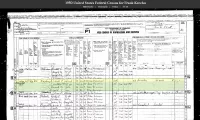
1950 US Census
The following shows the life of the Kuehn family that include Frank (37), Constance (32), Frank Jr. (3), and David (1). At the time Frank was working as a broker of goods.
Jun 24, 1950
Delete Story
Are you sure you want to delete this story?
Apr 19, 1950
Apr 19, 1950
Delete Story
Are you sure you want to delete this story?
Sep 13, 1949
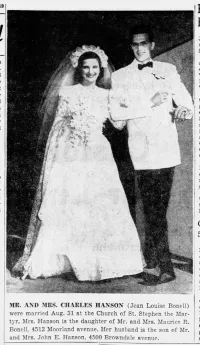
Mr. and Mrs. Charles Hanson
The article shows a picture of Mr. Charles Hanson and Mrs. Jean Louise Bonell) on their wedding day in 1949. Charles Hanson is the son of John E. Hanson who lived at 4500 Browndale Ave.
Sep 13, 1949
Mr. and Mrs. Charles Hanson
The article shows a picture of Mr. Charles Hanson and Mrs. Jean Louise Bonell) on their wedding day in 1949. Charles Hanson is the son of John E. Hanson who lived at 4500 Browndale Ave.Posted Date
Apr 24, 2024
Historical Record Date
Sep 13, 1949
Source Name
The Minneapolis Star
Delete Story
Are you sure you want to delete this story?
Aug 31, 1949
Aug 31, 1949
Mr. and Mrs. John E. Hanson
The article lists Mr. and Mrs. John E. Hanson at 4500 Browndale.Posted Date
Apr 24, 2024
Historical Record Date
Aug 31, 1949
Source Name
The Minneapolis Star
Source Website
Delete Story
Are you sure you want to delete this story?
Oct 15, 1945
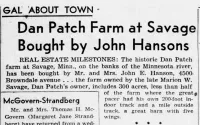
The Hanson by Dan Patch Farm
Mr. and Mrs. John Hanson of 4500 Browndale Ave., bought the historic 300-acre Dan Patch farm in Savage, Minnesota.
Oct 15, 1945
Delete Story
Are you sure you want to delete this story?
May 28, 1943
May 28, 1943
Delete Story
Are you sure you want to delete this story?
Jun 01, 1942
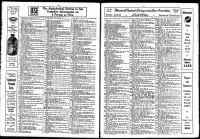
John E. Hanson
The following shows John E. Hanson resided at 4500 Browndale Ave in 1942. It also shows he was Vice President of Hardware Mutual Insurance Co and Hardware Indemnity Insurance Co.
Jun 01, 1942
Delete Story
Are you sure you want to delete this story?
Jun 01, 1941
Jun 01, 1941
Edina Historic Plat Maps
Two historical plat maps, dating back to 1949 and earlier, depict the precise location of the home.Posted Date
Apr 18, 2024
Historical Record Date
Jun 01, 1941
Source Name
Hennepin County GIS
Source Website
Delete Story
Are you sure you want to delete this story?
Feb 01, 1941
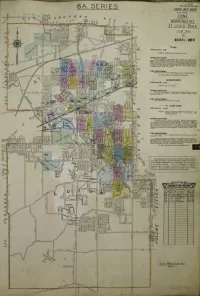
-

- Marley Zielike
Minneapolis, Minn. Volume 6a - Edina, Morningside, and St. Louis Park
Sanborn Fire Insurance Map from Minneapolis, Hennepin County, Minnesota. The map includes the home at 4500 Browndale Avenue along with the broader Country Club neighborhood in 1941. About Sanborn Fire Insurance Maps: Sanborn Fire Insurance Maps were created in the late 19th century by Daniel Alfred Sanborn to help insurance companies assess fire risk. These detailed maps evolved alongside cities, providing valuable data on buildings and urban landscapes. While their use in insurance declined with technological advancements, they remain vital for historical research and urban planning.
Minneapolis, Minn. Volume 6a - Edina, Morningside, and St. Louis Park
Sanborn Fire Insurance Map from Minneapolis, Hennepin County, Minnesota. The map includes the home at 4500 Browndale Avenue along with the broader Country Club neighborhood in 1941. About Sanborn Fire Insurance Maps: Sanborn Fire Insurance Maps were created in the late 19th century by Daniel Alfred Sanborn to help insurance companies assess fire risk. These detailed maps evolved alongside cities, providing valuable data on buildings and urban landscapes. While their use in insurance declined with technological advancements, they remain vital for historical research and urban planning.
Feb 01, 1941
Minneapolis, Minn. Volume 6a - Edina, Morningside, and St. Louis Park
Sanborn Fire Insurance Map from Minneapolis, Hennepin County, Minnesota. The map includes the home at 4500 Browndale Avenue along with the broader Country Club neighborhood in 1941.About Sanborn Fire Insurance Maps:
Sanborn Fire Insurance Maps were created in the late 19th century by Daniel Alfred Sanborn to help insurance companies assess fire risk. These detailed maps evolved alongside cities, providing valuable data on buildings and urban landscapes. While their use in insurance declined with technological advancements, they remain vital for historical research and urban planning.
Posted Date
Apr 18, 2024
Historical Record Date
Feb 01, 1941
Source Name
Library of Congress
Delete Story
Are you sure you want to delete this story?
Apr 11, 1940
Apr 11, 1940

-

- Marley Zielike
1940 US Census
The attached shows the 1940 Census documentation for 4500 Browndale Ave. The census listed J.E. (John E.) Hanson was the owner of 4500 Browndale Ave., he lived there along with his wife Ruth, son Charles, and "servant" Mary Carlson, all born in Minnesota. The home's value at the time was estimated to be $22,000. John was 45, and his occupation was listed as an executive for General Insurance, and a salary of $5,000+ per year.
1940 US Census
The attached shows the 1940 Census documentation for 4500 Browndale Ave. The census listed J.E. (John E.) Hanson was the owner of 4500 Browndale Ave., he lived there along with his wife Ruth, son Charles, and "servant" Mary Carlson, all born in Minnesota. The home's value at the time was estimated to be $22,000. John was 45, and his occupation was listed as an executive for General Insurance, and a salary of $5,000+ per year.
1940 US Census
The attached shows the 1940 Census documentation for 4500 Browndale Ave.The census listed J.E. (John E.) Hanson was the owner of 4500 Browndale Ave., he lived there along with his wife Ruth, son Charles, and "servant" Mary Carlson, all born in Minnesota. The home's value at the time was estimated to be $22,000. John was 45, and his occupation was listed as an executive for General Insurance, and a salary of $5,000+ per year.
Posted Date
Apr 25, 2024
Historical Record Date
Apr 11, 1940
Source Name
US Census
Delete Story
Are you sure you want to delete this story?
Jul 01, 1937
Jul 01, 1937
Historic Aerial Map
The images show the area and the home at 4500 Browndale in 1937.Posted Date
Apr 25, 2024
Historical Record Date
Jul 01, 1937
Source Name
University of Minnesota Libraries
Source Website
Delete Story
Are you sure you want to delete this story?
Nov 22, 1936
Nov 22, 1936
Delete Story
Are you sure you want to delete this story?
Jun 01, 1931
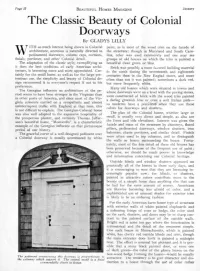
Beautiful Home Design Magazine
The article titled "The Classic Beauty of Colonial Doorways" by Gladys Lilly details the interest in Colonial-style architecture in 1931.
Jun 01, 1931
Beautiful Home Design Magazine
The article titled "The Classic Beauty of Colonial Doorways" by Gladys Lilly details the interest in Colonial-style architecture in 1931.Posted Date
Apr 29, 2024
Historical Record Date
Jun 01, 1931
Source Name
Hennepin County Library and the Hennepin History Museum
Delete Story
Are you sure you want to delete this story?
Jun 01, 1929
Jun 01, 1929
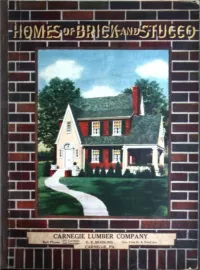
-

- Marley Zielike
Homes of Brick and Stucco
The following shows a sample of a colonial home from the late 1920s published by the Standard Home Company. David Gebhard writes about the popularity of the home design in his article, "The American Colonial Revival in the 1930s" published by The University of Chicago Press. He writes, "In 1930, Claude H. Miller emphasized, 'every community should have at least one example of this architecture (the colonial) that has survived for more than two hundred years and that has, today, a far greater appeal than any time in history.' And indeed, the architects, builders, and clients of the depression years of the 1930s not only made sure that there was one example but also made the colonial the most prevalent and popular of the time." Read the full article here: https://www.journals.uchicago.edu/doi/abs/10.1086/496322?journalCode=wp
Homes of Brick and Stucco
The following shows a sample of a colonial home from the late 1920s published by the Standard Home Company. David Gebhard writes about the popularity of the home design in his article, "The American Colonial Revival in the 1930s" published by The University of Chicago Press. He writes, "In 1930, Claude H. Miller emphasized, 'every community should have at least one example of this architecture (the colonial) that has survived for more than two hundred years and that has, today, a far greater appeal than any time in history.' And indeed, the architects, builders, and clients of the depression years of the 1930s not only made sure that there was one example but also made the colonial the most prevalent and popular of the time." Read the full article here: https://www.journals.uchicago.edu/doi/abs/10.1086/496322?journalCode=wp
Homes of Brick and Stucco
The following shows a sample of a colonial home from the late 1920s published by the Standard Home Company.David Gebhard writes about the popularity of the home design in his article, "The American Colonial Revival in the 1930s" published by The University of Chicago Press. He writes, "In 1930, Claude H. Miller emphasized, 'every community should have at least one example of this architecture (the colonial) that has survived for more than two hundred years and that has, today, a far greater appeal than any time in history.' And indeed, the architects, builders, and clients of the depression years of the 1930s not only made sure that there was one example but also made the colonial the most prevalent and popular of the time."
Read the full article here: https://www.journals.uchicago.edu/doi/abs/10.1086/496322?journalCode=wp
Posted Date
Apr 29, 2024
Historical Record Date
Jun 01, 1929
Source Name
Archive.org
Delete Story
Are you sure you want to delete this story?
Apr 08, 1924
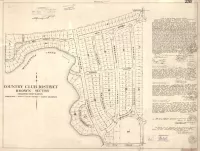
Country Club District Brown Section
Title: Country Club District Brown Section Addition Name: Country Club District Brown Section Property Owners: Browndale Farm (Edina, Minn.); Thorpe Bros. (Minneapolis, Minn.)
Apr 08, 1924
Country Club District Brown Section
Title: Country Club District Brown SectionAddition Name: Country Club District Brown Section
Property Owners: Browndale Farm (Edina, Minn.); Thorpe Bros. (Minneapolis, Minn.)
Posted Date
Apr 25, 2024
Historical Record Date
Apr 08, 1924
Source Name
Hennepin County Library and the Hennepin History Museum
Delete Story
Are you sure you want to delete this story?
Jun 01, 1854
Jun 01, 1854
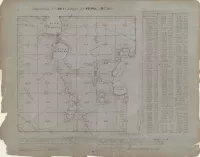
-

- Marley Zielike
Office of U.S. Surveyor General
The survey from 1854 shows the area that is now south Minneapolis into Edina. More about the survey: The Land Ordinance Act of 1785 established the rectangular survey system, later named the Public Land Survey System (PLSS), dividing western lands into grid-like townships and sections. This system facilitated the sale of surveyed land by the government, generating crucial revenue. Before the PLSS, a confusing landmark-based system called metes and bounds was used. The PLSS relies on coordinates, with distances and bearings measured from north-south meridians and east-west baselines. The primary unit of land division is the Public Land Survey Township, each measuring six miles square and containing 36 sections, each one square mile (640 acres). The Office of U.S. Surveyor General, established in 1796, oversaw land surveys as the nation expanded westward. It was later placed under the General Land Office (GLO) in 1836, then the Department of Interior in 1849. In 1925, the Surveyor General's office closed, and surveying duties were absorbed by the GLO, which was eventually abolished in 1946, with its functions transferred to the Bureau of Land Management (BLM). In Minnesota, early surveys were conducted by the Surveyor General of Iowa and Wisconsin. The Office of Surveyor General of Minnesota was established in 1857, overseeing land surveys in the territory and state. Land east of the Mississippi was surveyed from the Galena Base Line, while land west of the Mississippi was surveyed from the Clarendon Base Line. Survey contracts were awarded competitively to deputy surveyors, who conducted field work with crews, marking boundaries and recording measurements. Distances were measured using chains and links, with alignment determined by compasses. Monuments were placed at township and section corners, often with "bearing trees" nearby. In areas where chains couldn't be used, distances were calculated using triangulation. Deputy surveyors also mapped physical features like lakes, rivers, and forests, noting soil type and vegetation in field notes. These records, now digitized, provide detailed information and are accessible online and preserved by the Minnesota State Archives.
Office of U.S. Surveyor General
The survey from 1854 shows the area that is now south Minneapolis into Edina. More about the survey: The Land Ordinance Act of 1785 established the rectangular survey system, later named the Public Land Survey System (PLSS), dividing western lands into grid-like townships and sections. This system facilitated the sale of surveyed land by the government, generating crucial revenue. Before the PLSS, a confusing landmark-based system called metes and bounds was used. The PLSS relies on coordinates, with distances and bearings measured from north-south meridians and east-west baselines. The primary unit of land division is the Public Land Survey Township, each measuring six miles square and containing 36 sections, each one square mile (640 acres). The Office of U.S. Surveyor General, established in 1796, oversaw land surveys as the nation expanded westward. It was later placed under the General Land Office (GLO) in 1836, then the Department of Interior in 1849. In 1925, the Surveyor General's office closed, and surveying duties were absorbed by the GLO, which was eventually abolished in 1946, with its functions transferred to the Bureau of Land Management (BLM). In Minnesota, early surveys were conducted by the Surveyor General of Iowa and Wisconsin. The Office of Surveyor General of Minnesota was established in 1857, overseeing land surveys in the territory and state. Land east of the Mississippi was surveyed from the Galena Base Line, while land west of the Mississippi was surveyed from the Clarendon Base Line. Survey contracts were awarded competitively to deputy surveyors, who conducted field work with crews, marking boundaries and recording measurements. Distances were measured using chains and links, with alignment determined by compasses. Monuments were placed at township and section corners, often with "bearing trees" nearby. In areas where chains couldn't be used, distances were calculated using triangulation. Deputy surveyors also mapped physical features like lakes, rivers, and forests, noting soil type and vegetation in field notes. These records, now digitized, provide detailed information and are accessible online and preserved by the Minnesota State Archives.
Office of U.S. Surveyor General
The survey from 1854 shows the area that is now south Minneapolis into Edina.More about the survey: The Land Ordinance Act of 1785 established the rectangular survey system, later named the Public Land Survey System (PLSS), dividing western lands into grid-like townships and sections. This system facilitated the sale of surveyed land by the government, generating crucial revenue. Before the PLSS, a confusing landmark-based system called metes and bounds was used.
The PLSS relies on coordinates, with distances and bearings measured from north-south meridians and east-west baselines. The primary unit of land division is the Public Land Survey Township, each measuring six miles square and containing 36 sections, each one square mile (640 acres).
The Office of U.S. Surveyor General, established in 1796, oversaw land surveys as the nation expanded westward. It was later placed under the General Land Office (GLO) in 1836, then the Department of Interior in 1849. In 1925, the Surveyor General's office closed, and surveying duties were absorbed by the GLO, which was eventually abolished in 1946, with its functions transferred to the Bureau of Land Management (BLM).
In Minnesota, early surveys were conducted by the Surveyor General of Iowa and Wisconsin. The Office of Surveyor General of Minnesota was established in 1857, overseeing land surveys in the territory and state. Land east of the Mississippi was surveyed from the Galena Base Line, while land west of the Mississippi was surveyed from the Clarendon Base Line.
Survey contracts were awarded competitively to deputy surveyors, who conducted field work with crews, marking boundaries and recording measurements. Distances were measured using chains and links, with alignment determined by compasses. Monuments were placed at township and section corners, often with "bearing trees" nearby. In areas where chains couldn't be used, distances were calculated using triangulation.
Deputy surveyors also mapped physical features like lakes, rivers, and forests, noting soil type and vegetation in field notes. These records, now digitized, provide detailed information and are accessible online and preserved by the Minnesota State Archives.
Posted Date
Apr 18, 2024
Historical Record Date
Jun 01, 1854
Source Name
GLO Historic Plat Map Retrieval System
Delete Story
Are you sure you want to delete this story?




